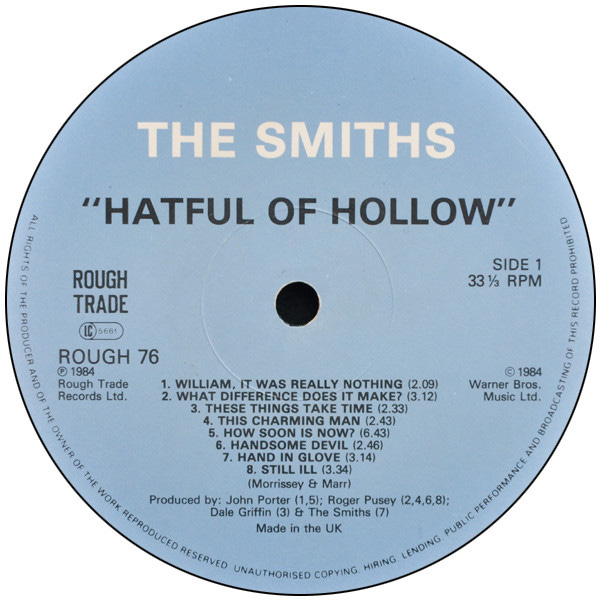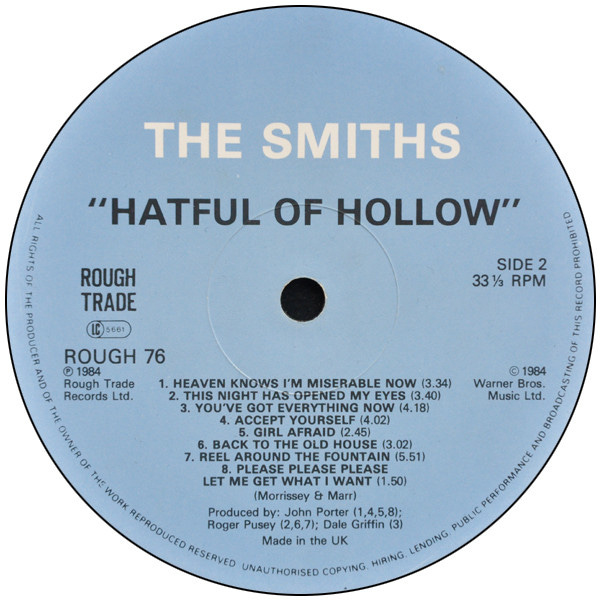Hatful Of Hollow
The Story Behind The Smiths' First Compilation Album
"I am so troubled by the flatness of the debut [The Smiths studio album, which was released February 20, 1984] that I present to Geoff [Travis, owner of Rough Trade Records] the idea of Hatful Of Hollow as an interim collection that might hopefully detain those scared off by the blunted thud of The Smiths. Geoff fully agrees, and the project works well - charting at number 7, and holding on for forty-six weeks, tipping the platinum sales point that The Smiths had missed."1 -Morrissey
Released 40 years ago (November 12, 1984), Hatful of Hollow was The Smiths' first compilation album. As touched upon in Autobiography, the album came about due to Morrissey’s perception that The Smiths’ debut album had underperformed. While the album was released in the UK, Europe, as well as other regions (such as Canada and Japan) in 1984, it was omitted from the US market. Sire Records, which had previously acquired licensing rights to The Smiths' music from Rough Trade, had declined to release it in America (they finally relented in 1993, at which time the album had its US debut almost nine years to the day of its initial debut).2
Hatful of Hollow features tracks from The Smiths' BBC Radio 1 sessions3, a different mix of 'Hand in Glove' as that found on their eponymous studio album, as well as their two most recent singles ('Heaven Knows I'm Miserable Now' and 'William, It Was Really Nothing') along with their respective B-sides ('Girl Afraid', 'How Soon Is Now?'4, and 'Please Please Please Let Me Get What I Want').
As referenced above, Hatful of Hollow reached No. 7 on the UK Albums Chart, remaining on the chart for 46 weeks. Q magazine placed Hatful of Hollow at No. 44 on its list of the "100 Greatest British Albums Ever".5
The album's cover art features a photograph of an individual named Fabrice Colette, which was taken by Gilles Decroix. The photograph was featured in a July 1983 article in French magazine Libération (which was founded by Jean Cocteau6). Colette sports a tattoo of a drawing by Jean Cocteau that was featured in the latter's 1928 novel, The White Paper (French: Le Livre blanc, alternatively The White Book7). According to the article, Colette commissioned the tattoo because he idolized Cocteau.

The runout on the A-side of the vinyl format of the album was etched with "THE IMPOTENCE OF ERNEST".
Keep reading with a 7-day free trial
Subscribe to Morrissey, Ringleader of The Tormentors to keep reading this post and get 7 days of free access to the full post archives.





